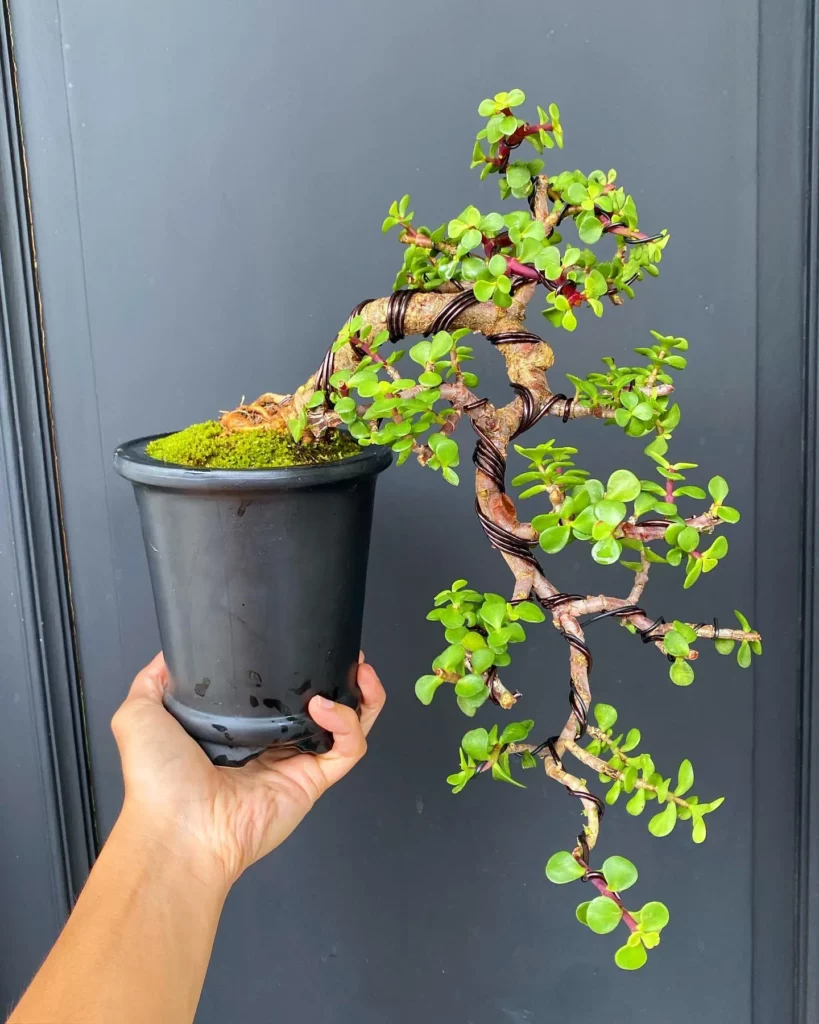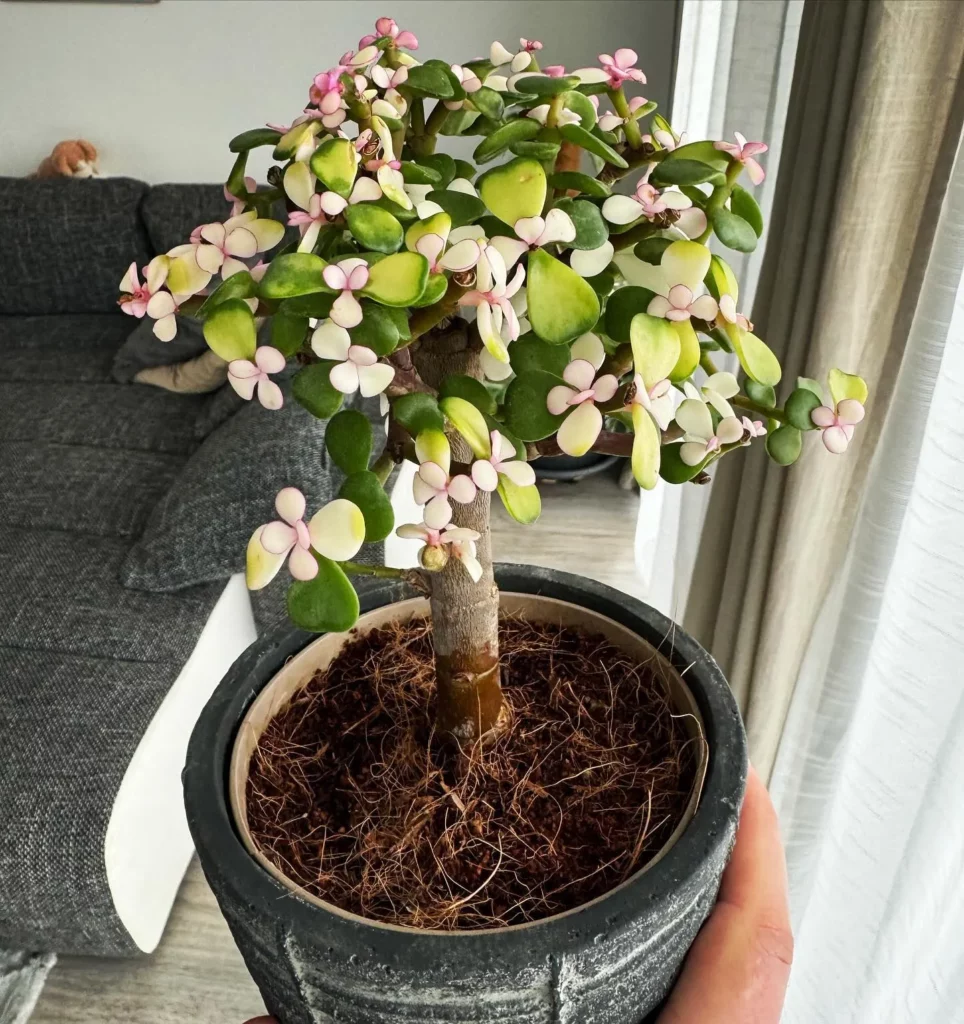While the Jade Bonsai is generally considered an indoor tree in most temperate zones, it can also be successfully grown outdoors in certain conditions. Let’s explore the ideal locations for growing a Jade Bonsai and the factors to consider for its optimal growth.
Jade Bonsai Care Guidelines



Proper care is essential for the health and well-being of the Jade Bonsai. Taking care of this unique plant involves various aspects, including watering, fertilizing, pruning and wiring, repotting, propagating, and managing pests and diseases.
Watering Jade Bonsai
Watering is a critical aspect of jade bonsai care. While the Jade Bonsai prefers slightly drier conditions, it is important to provide adequate moisture without overwatering. Here are some watering tips:
- Check the moisture level of the soil by inserting your finger about an inch deep. Water the bonsai only when the topsoil feels dry.
- Avoid leaving the roots constantly wet, as this can lead to root rot. Ensure proper drainage by using well-draining soil and a pot with drainage holes.
- Water thoroughly, allowing the water to flow through the drainage holes to ensure the entire root system is adequately hydrated.
- During the winter months, reduce watering to prevent over-saturation and promote dormancy.
Fertilizing Jade Bonsai
Fertilizing is crucial for providing the necessary nutrients to support the growth and overall health of your Jade Bonsai. Here’s what you need to know:
- Use a balanced organic or slow-release fertilizer specifically formulated for bonsai trees.
- Apply the fertilizer during the growing season, typically from spring to fall.
- Follow the instructions on the fertilizer package for proper dosage and frequency.
- Avoid overfertilization, as it can lead to salt buildup and burn the roots. Always err on the side of underfertilizing rather than overfertilizing.
Pruning and Wiring Jade Bonsai
No products found.
Pruning and wiring are essential techniques for shaping and maintaining the desired form of your Jade Bonsai. Here are some guidelines to follow:
- Prune your bonsai regularly to remove dead, damaged, or excessive growth.
- Use sharp and clean tools to make precise cuts, ensuring minimal damage to the tree.
- Wiring can be used to guide the branches into the desired position. Be cautious not to wire too tightly, as it can damage the branches.
- Regularly inspect and adjust the wiring to prevent it from digging into the bark as the tree grows.
Repotting Jade Bonsai
Repotting is necessary to provide fresh soil and encourage root growth in the Jade Bonsai. Here’s what you should keep in mind:
- Repot the bonsai every 2-3 years to prevent the soil from becoming compacted.
- Choose a suitable bonsai soil mix that provides good drainage while retaining some moisture.
- Prune the roots to maintain a balanced root-to-foliage ratio before repotting.
- Repot in spring when the tree is actively growing to minimize stress and promote new growth.
Propagating Jade Bonsai
Propagating the Jade Bonsai allows you to create new plants and expand your bonsai collection. Here are two common methods:
- Leaf Cuttings: Select a healthy leaf and remove it from the parent plant. Place the leaf on well-draining soil, mist it regularly, and wait for new roots to form.
- Stem Cuttings: Cut a healthy stem with several nodes from the parent plant. Plant the cutting in well-draining soil, keeping it moist until new roots and shoots develop.
Pests and Diseases of Jade Bonsai
Jade Bonsai can be susceptible to certain pests and diseases. Here are some common issues to watch out for:
| Pests | Diseases |
|---|---|
| Aphids | Root rot |
| Scale insects | Leaf blight |
| Spider mites | Powdery mildew |
Jade Bonsai Placement and Lighting

For optimal growth, place your jade bonsai in a window where it will receive some direct light or bright indirect light for more than three hours a day. This will provide the tree with the necessary light intensity it needs to flourish.
Here are some key points to consider when it comes to jade bonsai placement and lighting:
- Choose a location with ample natural light, preferably full sun if possible. The jade bonsai needs bright light to thrive.
- Avoid placing the bonsai in a dark or dimly lit area, as this can hinder its growth.
- Rotate the bonsai every few weeks to ensure even light distribution and balanced growth.
- Consider using a grow light if natural lighting is insufficient. This can supplement the light requirements of your jade bonsai and promote healthy growth.
Jade Bonsai Placement and Lighting Recommendations
| Lighting Recommendation | Details |
|---|---|
| Placement | Indoors, preferably in a window with direct or bright indirect light for more than three hours a day. |
| Natural Light | Choose a location that receives ample natural light, preferably full sun if possible. |
| Brightness | Avoid placing in dark or dimly lit areas to ensure proper growth. |
| Rotation | Rotate the bonsai every few weeks for even light distribution and balanced growth. |
| Grow Light | Consider using a grow light to supplement light requirements if natural lighting is insufficient. |









